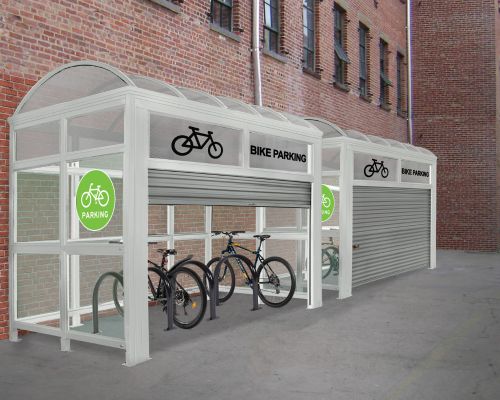
Cycling is a great transportation and lifestyle choice that promotes health, environmental sustainability, and community connection. However, a lack of sheltered, weather-protected bicycle parking options can act as a barrier to this transportation mode for many cyclists. Bicycle shelters play a crucial part in the urban landscape, offering a sanctuary for bikes and riders. But what does the future of these structures look like? Here’s a glimpse into the latest trends and what they mean for bicyclists.
Current Challenges in Shelter Designs
The rise of cycling as a primary transport method in cities highlights the need for improved infrastructure. Cyclists often struggle to find proper parking, using street signs and lamp posts as temporary solutions. On the other hand, urban planners face the challenge of fitting bike shelters into tight urban spaces. Bike theft and vandalism are other common issues with traditional open-air parking and deter people from cycling. Instead, they encourage vehicle use. Addressing these problems requires innovative shelter designs that improve safety and encourage cycling in urban areas.
Latest Trends in Bicycle Shelter Designs
To address these challenges, designers and architects use creative solutions to respond to the demand for more bicycle shelters in urban areas. Here are some of the latest trends in bicycle shelter design.
1. Integrated Technology for Safer Storage
Modern bicycle shelters are becoming smarter, integrating advanced security systems such as electronic access control and GPS tracking. Some designs feature mobile app connectivity, allowing cyclists to find and reserve parking spaces in advance. Some shelters utilize solar panels for power, offering sustainability and providing lighting and charging stations for e-bikes, further incentivizing their use in urban areas.
2. Space-Saving and Versatile Shelters
With urban space at a premium, innovative shelter designs must make the most of limited room. Stackable shelters can accommodate more bikes in smaller footprints. Covered bike shelters can double as seating areas for visitors and commuters. Utilizing vertical space with multistory facilities is another growing trend, optimizing city landscapes for efficient bike storage.
3. Sustainable Shelters
Some cities are finding ways to incorporate sustainability and green infrastructure into bike shelters. Urban planners are incorporating green roofs and alternative energy solutions into designs, providing a haven for nature in the city. This creates environmental benefits, such as improved air quality and reduced stormwater runoff.
Predictions for Future Trends
The future is bright for bicycle shelter designs, with technological advancements set to revolutionize the biking experience. Anticipate structures that can accommodate high-traffic days or certain weather conditions. They may also use integrated systems that provide real-time checkups for parked bikes. Furthermore, there’s potential for service bike shelters, where users pay a small fee for premium amenities and care for their bicycles while parked.
These trends in bicycle shelter designs are crucial steps toward creating cities that facilitate sustainable and inclusive modes of transport. For urban planners and the cycling community, the challenge is to adopt these changes and make cycling a more accessible and enjoyable experience for everyone. Invest in bicycle infrastructure, such as covered shelters through Handi-Hut. This way, you can create comfortable conditions for your city’s bikers.
